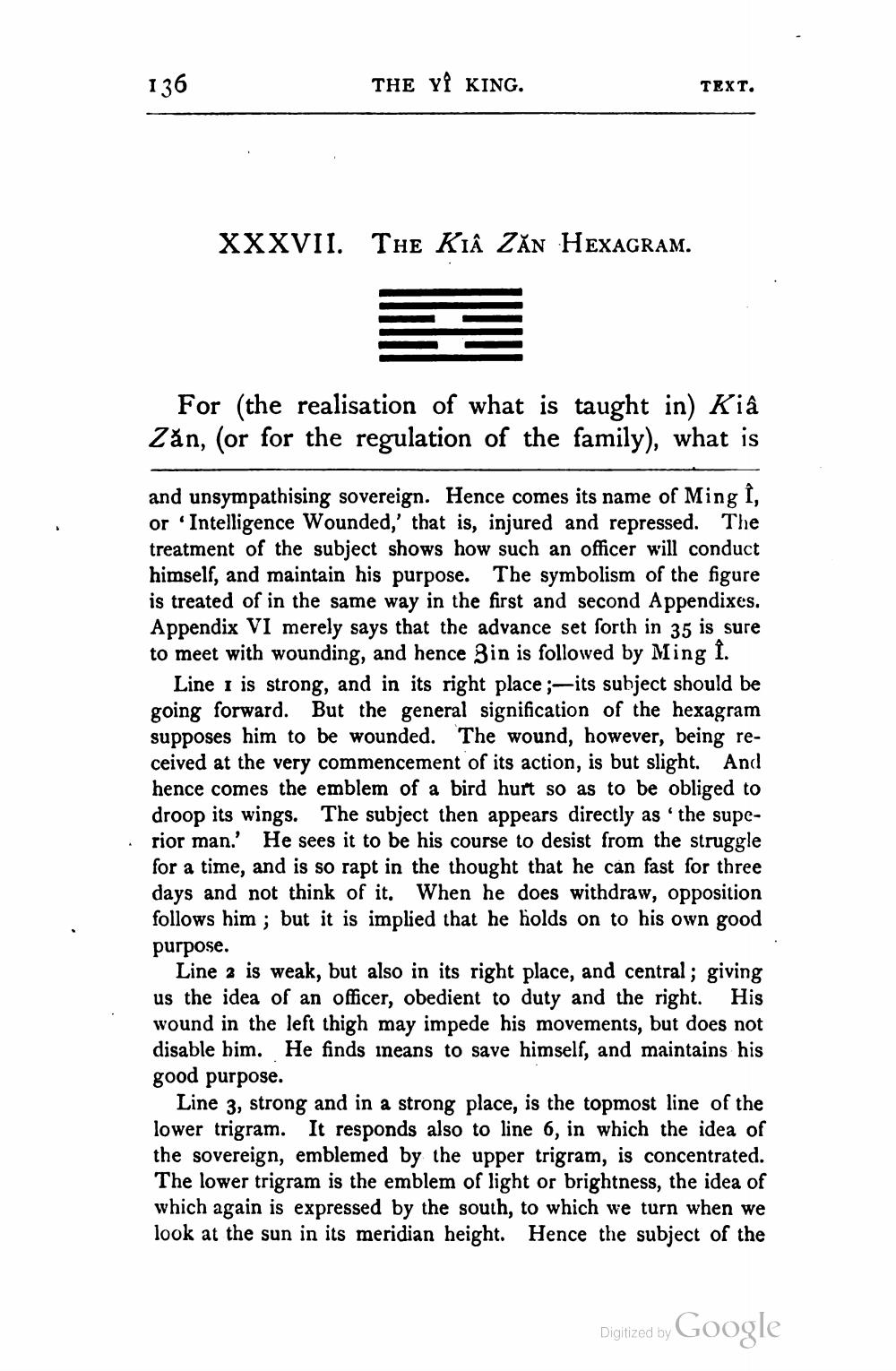________________
136
THE YÎ KING.
TEXT.
Text.
XXXVII. THE KIÂ ZĂN HEXAGRAM.
For (the realisation of what is taught in) Kia Zăn, (or for the regulation of the family), what is
and unsympathising sovereign. Hence comes its name of Ming Î, or Intelligence Wounded,' that is, injured and repressed. The treatment of the subject shows how such an officer will conduct himself, and maintain his purpose. The symbolism of the figure is treated of in the same way in the first and second Appendixes. Appendix VI merely says that the advance set forth in 35 is sure to meet with wounding, and hence Zin is followed by Ming I.
Line 1 is strong, and in its right place;- its subject should be going forward. But the general signification of the hexagram supposes him to be wounded. The wound, however, being received at the very commencement of its action, is but slight. And hence comes the emblem of a bird hurt so as to be obliged to droop its wings. The subject then appears directly as the superior man.' He sees it to be his course to desist from the struggle for a time, and is so rapt in the thought that he can fast for three days and not think of it. When he does withdraw, opposition follows him ; but it is implied that he holds on to his own good purpose.
Line 2 is weak, but also in its right place, and central; giving us the idea of an officer, obedient to duty and the right. His wound in the left thigh may impede his movements, but does not disable him. He finds ineans to save himself, and maintains his good purpose.
Line 3, strong and in a strong place, is the topmost line of the lower trigram. It responds also to line 6, in which the idea of the sovereign, emblemed by the upper trigram, is concentrated. The lower trigram is the emblem of light or brightness, the idea of which again is expressed by the south, to which we turn when we look at the sun in its meridian height. Hence the subject of the
Digitized by Google




